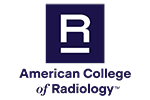Lower Extremity Arterial Revascularization - Post-Therapy Imaging
The goal of endovascular angioplasty and of surgical bypass is to restore normal blood flow to the diseased arteries in the legs for individuals with peripheral artery disease. Both procedures need imaging follow-up to check for lesions, typically narrowing of arteries that may come back and cause symptoms. Often, noninvasive testing is done first to help choose the appropriate imaging test. The first test is usually measurement of the ankle-bronchial index (ABI), a noninvasive test in which blood pressure cuffs are placed on the legs to measure local pressures. Other noninvasive tests can also be used.
For individuals without symptoms after their procedure, it is appropriate to use a baseline ultrasound (US) examination in addition to ABI and other noninvasive tests. For patients with symptoms such as severe leg cramps during exercise, pain at rest, and wounds that do not heal properly after the procedure, imaging can include CT or MR angiography in addition to US. If the symptoms are more severe, including cold and discolored limbs with a very low pulse, the primary object is to save the leg from amputation. In extremely severe cases, it is appropriate to skip imaging and go directly to surgery. In nonthreatening but severe cases, arteriography (x-rays after a dye is injected into blood vessels through a catheter) is the most appropriate follow-up. Arteriography can provide images of lesions that limit flow and cause drops in leg blood pressure. In less severe cases, both US and CT angiography are appropriate imaging tests. For more information, see the Peripheral Artery Disease page.
This page was reviewed on December 15, 2021


